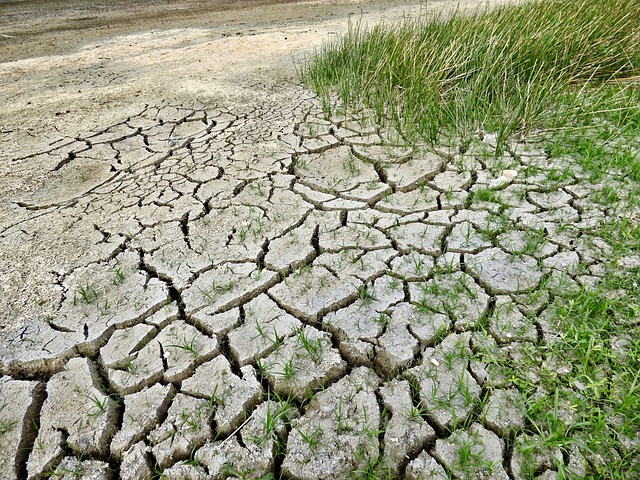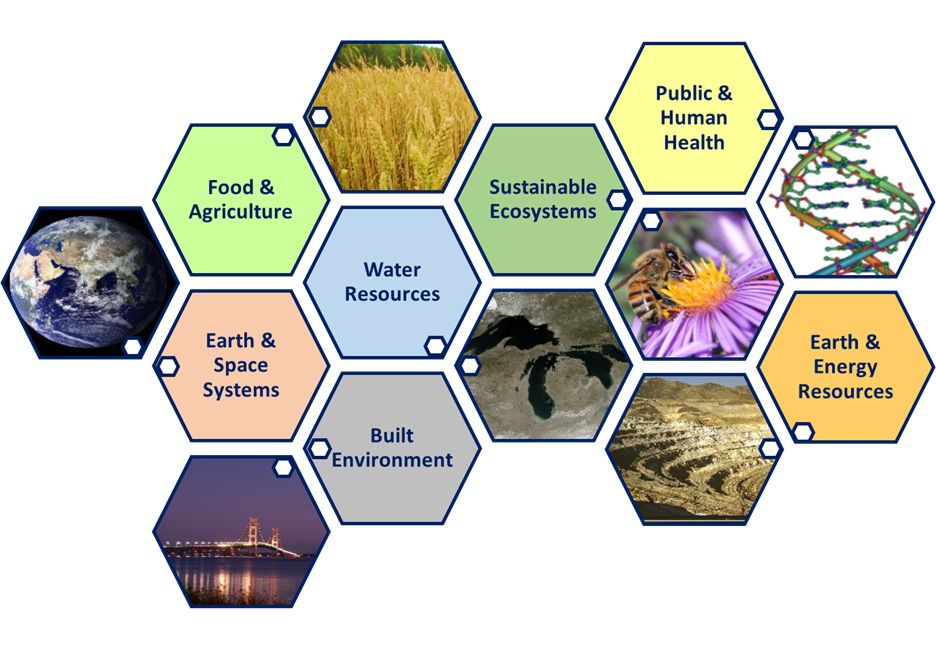Mi-STAR Themes
Mi-STAR themes are groupings of topics used to develop a curriculum that connects the disciplinary core ideas and crosscutting concepts of the Next Generation Science Standards (NGSS) to real-world 21st Century issues. Incorporating themes into the curriculum connects classroom learning to topics related to students’ lives and allows students to explore science content and methods in a way that is integrated across traditional disciplinary boundaries.
.jpg) |  |  |  |
In the Classroom
Each Mi-STAR unit integrates one or more of the following seven themes into the unit:
Earth and Space Systems: All of Earth’s systems (lithosphere, biosphere, hydrosphere, and cryosphere) are interconnected and dynamic. Understanding the larger space system that Earth is part of, allows understanding of fundamental aspects of our planet such as climate, seasons, tides, impact events and the distribution of Earth’s elements.
Sustainable Ecosystems: Ecosystems are natural and human modified systems that provide life-sustaining resources and processes for current and future generations. By sustaining ecosystem health, we contribute to the health of human societies.
processes for current and future generations. By sustaining ecosystem health, we contribute to the health of human societies.
Earth and Space Systems: All of Earth’s systems (lithosphere, biosphere, hydrosphere, and cryosphere) are interconnected and dynamic. Understanding the larger space system that Earth is part of, allows understanding of fundamental aspects of our planet such as climate, seasons, tides, impact events and the distribution of Earth’s elements.
Sustainable Ecosystems: Ecosystems are natural and human modified systems that provide life-sustaining resources and
 processes for current and future generations. By sustaining ecosystem health, we contribute to the health of human societies.
processes for current and future generations. By sustaining ecosystem health, we contribute to the health of human societies.
Water Resources: Water is found everywhere on Earth, is a key part of all ecosystems, and is essential for life. Understanding and caring for both the natural and man-made water cycles are a key part of improving Michigan’s future.
Food and Agriculture: Everyone wants to have access to healthy food – no matter where they live. Providing nutritional options at reasonable costs, while minimizing impacts on natural systems, is a goal we all share.
Energy and Earth Resources: Humans depend on the Earth for resources. Modern societies need energy. By being aware of where our energy comes from and how we use it, we contribute to a brighter future.
Food and Agriculture: Everyone wants to have access to healthy food – no matter where they live. Providing nutritional options at reasonable costs, while minimizing impacts on natural systems, is a goal we all share.
Energy and Earth Resources: Humans depend on the Earth for resources. Modern societies need energy. By being aware of where our energy comes from and how we use it, we contribute to a brighter future.
Human and Public Health: We all want to live long and healthy lives. By understanding how to protect ourselves and others from health risks, we can prevent diseases, extend lifespans, and enhance personal health and
quality of life.
Infrastructure and the Built Environment: Humans improve the quality of their lives by designing safe and sustainable infrastructure that support our lifestyle, culture, and societies. By designing infrastructure and technology that meets the needs of society while protecting natural systems, we work toward a more sustainable future.
The themes were selected based on important national or global challenges, identified by the National Research Council and several professional societies, as goals that harness science, technology, and innovation to solve. (For a complete list of citations, see Gochis, Huntoon and Guth, 2015).
Additionally, the themes provide a focus for the curriculum design process and essential guidance for three-dimensional learning. Students investigate different aspects of the seven themes in 6th, 7th, and 8th grade through place-based, scaffolded units that progressively build learners’ depth of understanding.
Infrastructure and the Built Environment: Humans improve the quality of their lives by designing safe and sustainable infrastructure that support our lifestyle, culture, and societies. By designing infrastructure and technology that meets the needs of society while protecting natural systems, we work toward a more sustainable future.
Deeper Look
One of the goals of the Next Generation Science Standards (NGSS) is to support K-12 science education reform that reflects the interconnected nature of science as it is practiced and experienced in the real world. The Mi-STAR curriculum aligns with this goal as our themes provide the framework for identifying STEM questions that address major challenges and opportunities of the 21st century, are relevant to students’ lives, and connect with state and national standards.The themes were selected based on important national or global challenges, identified by the National Research Council and several professional societies, as goals that harness science, technology, and innovation to solve. (For a complete list of citations, see Gochis, Huntoon and Guth, 2015).
Additionally, the themes provide a focus for the curriculum design process and essential guidance for three-dimensional learning. Students investigate different aspects of the seven themes in 6th, 7th, and 8th grade through place-based, scaffolded units that progressively build learners’ depth of understanding.
Sources
- Mi-STAR’s Committee on Theme Development (2015). Mi-STAR Curricular Themes. E. E. Gochis, J. E. Huntoon and A. L. Guth (Eds.). Available online at: http://mistar.mtu.edu/curriculum-resources/ , pp. 3.



















